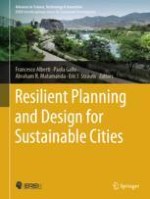2024 | OriginalPaper | Buchkapitel
The Application and Function of Colors in Urban Spaces (Case Study of Amirchakhmaq Square, Yazd, Iran)
verfasst von : Mozhgan Hassani Kouchaki, Jasmine Gohil
Erschienen in: Resilient Planning and Design for Sustainable Cities
Verlag: Springer Nature Switzerland
Aktivieren Sie unsere intelligente Suche, um passende Fachinhalte oder Patente zu finden.
Wählen Sie Textabschnitte aus um mit Künstlicher Intelligenz passenden Patente zu finden. powered by
Markieren Sie Textabschnitte, um KI-gestützt weitere passende Inhalte zu finden. powered by
